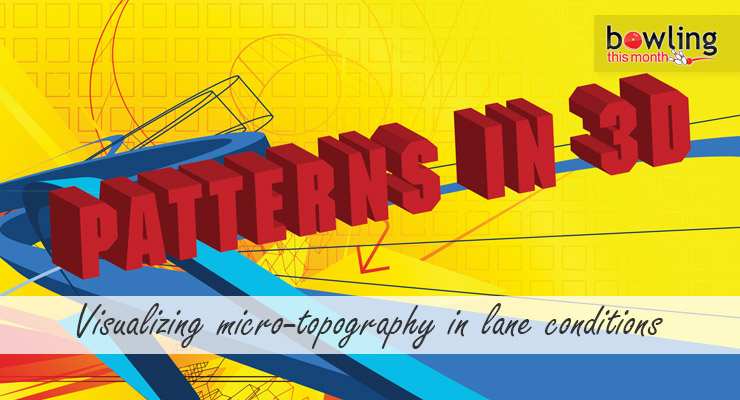Article Contents
- 1. Overview
- 2. THS (Typical House Shot)
- 3. USBC Open
- 4. “The BTM” Tournament
- 5. Visualizing the depth through color
- 6. See the edge, use the edge
- 7. Applying the visualization: matching the 3-D pattern with ball motion
- 8. Closing note
Note: This article is only available to Bowling This Month subscribers.
Unlike other sports, where the environment is clearly identifiable, the playing field in bowling is nearly invisible to the naked eye. As they compete, bowlers can’t see the actual structure or topography of the lane condition used in competition. Rather, elite bowlers must rely on their previous study of lane graphs and knowledge of where to play lanes. To be successful, these bowlers need to watch ball motion closely to determine where to start playing the pattern, as well as when and where to move, make adjustments, as oil depletes, creating transition. With this in mind, accurate mental model constructions would certainly help with lane play and help readers develop a better understanding of lane patterns.
While teaching and coaching, an individual’s eyes always light up with excitement and enthusiasm when I reveal three-dimensional graphs. After sharing insight and images, good bowlers begin to understand ball reaction better, from lining up on the fresh, to dealing proactively and confidently with transition. One goal of this article is to help readers visualize the topography of a three-dimensional pattern when they only have access to two-dimensional information (i.e., overhead and composite). With the review of 3-D images of lane conditions, elite bowlers can develop a general visual sense of the invisible.
Since most individuals have not had the opportunity to see graphs in 3-D, in this month’s Slowinski at-large, I present several patterns in three dimensions. No special glasses are needed. It is an opportunity to truly see the contour, shape and topography of the pattern. To illustrate, I share with readers detailed two and three dimensional views of the 2009 “The BTM” Tournament (39 feet), the 2009 USBC Open pattern (40 feet) and a typical house shot (40 feet). Although the pattern lengths are similar, each pattern is very different, from a structural standpoint. Specifically, I want readers to see the differences between a 1-to-1 flat pattern and a typical house condition as well as an easier sport pattern.
Since the lane environment is invisible, we must rely on visual constructions of the patterns to give a sense of what the structure is in reality. This article will help you move forward in an area of bowling study that is extremely complex and requires focused reflection and practice in order to become competent. To be the best player you can become requires a deeper understanding of lane patterns.
Overview
The three patterns presented represent a range of difficulty, from the easy house shot ...
Already a premium member? Click here to log in.


